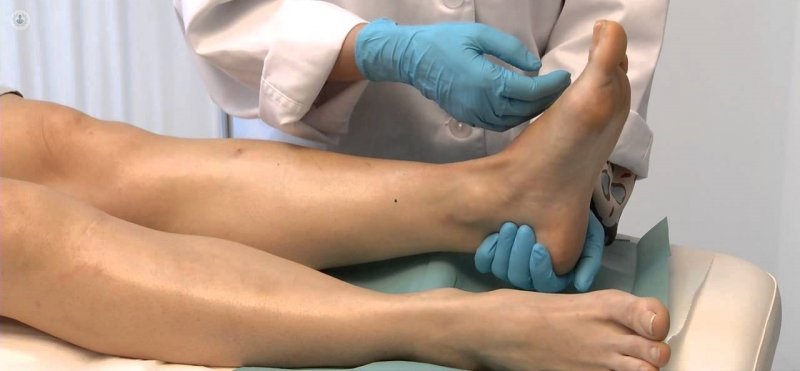I suffer from diabetic foot, how should I treat it?
Written by:Diabetes can damage nerves and blood vessels of the feet. This result can cause numbness and reduce its sensitivity. As a result, you may not heal well feet if injured. If a blister appears, you may not notice and may worsen. These ulcers facilitate infection can lead to gangrene and the need for amputation.
Hygiene in the treatment of diabetic foot
- Wash your feet daily
- Use warm water, between 36 and 37 °. Check the temperature with a bath thermometer or elbow.
- Use mild soap
- Do not leave your feet in water more than 10 minutes. The long baths facilitate maceration.
- Do not forget to wash and dry the areas between fingers
- Once washed, use a moisturizer
 Foot inspection
Foot inspection
Explore the feet every day. If you can not see well ask someone to do it for you in order to detect:
- Dry, cracked skin
- Blisters or ulcers
- Bruises or cuts
- Redness, warmth or tenderness
- firm or hard points
If a wound appears:
- Consult your doctor.
- You should rest the injured foot.
- Clean the wound with soap and water.
- Disinfect it with a sterile gauze and antiseptic transparent.
- Cover with sterile gauze.
Remember to be vaccinated against tetanus. The booster dose if it is already vaccinated, is 10 years.
Nail Care
- Cut nails after washing of the feet, for so they will be softer and easier to cut.
- Use blunt scissors.
- They should be cut horizontally, leaving the straight edges.
- they should not leave too short, since then, growing up, you can stick on your finger.
- Never use: pointed scissors, manicure pliers, razor blades, metal files, corn remedies, etc.
- Check that the edge of each nail does not put pressure on the skin of another finger
- See your podiatrist regularly and report who is diabetic.
Footwear and clothing
- You must wear comfortable shoes, preferably leather with nonslip soles.
- When shopping for shoes, you should try them when your feet are bigger, usually in the afternoon.
- When released, start using them gradually, gradually increasing the time.
- Daily, before use, you should check with your hands inside looking for cracks, peeling lining, stones, irregularities, etc.
- You should change your socks or stockings daily.
- Do not wear that too compressed and impede blood flow.
- Do not walk barefoot ever. At home, always wear slippers and beach or pool, always wear sandals even when entering the water.
If you have any questions or if you notice any type of signal not know how to treat, remember to consult your specialist in Angiology and Vascular Surgery .
Edited by Roser Berner Ubasos.



